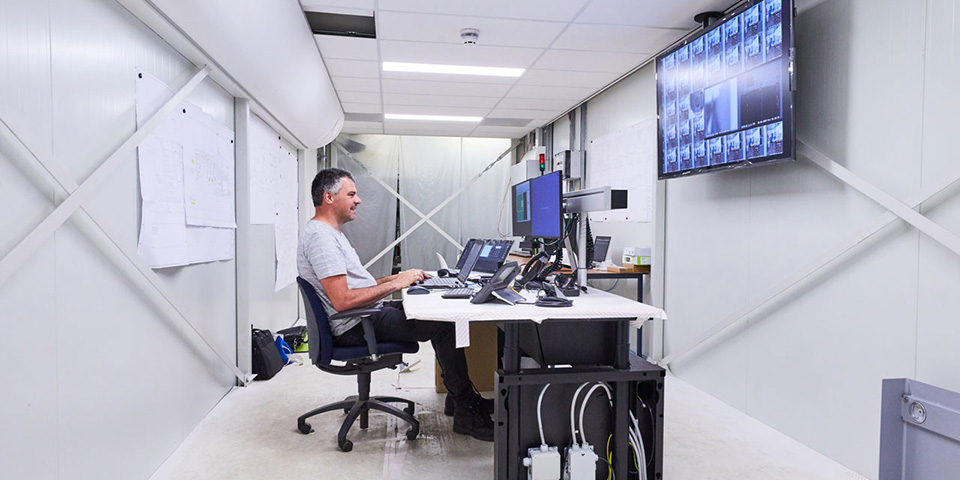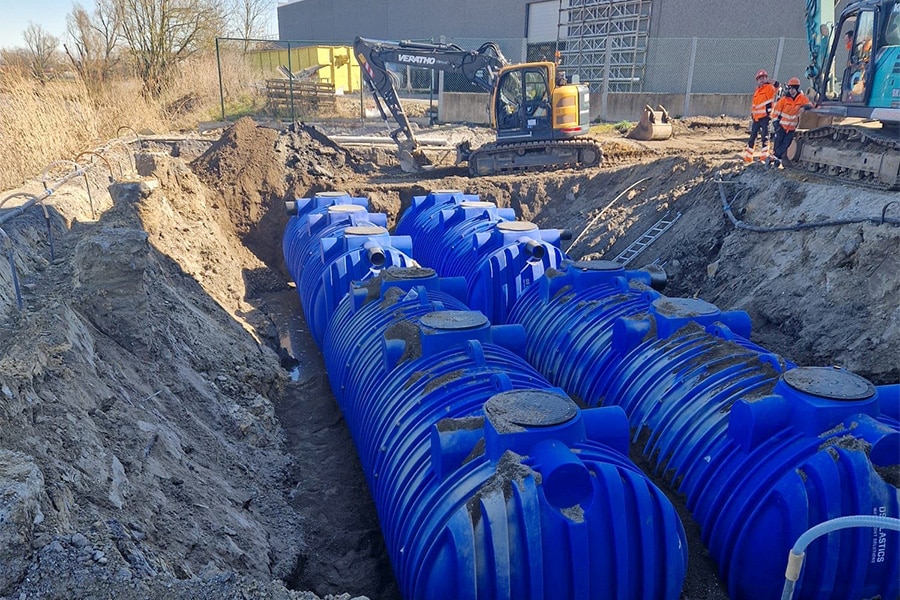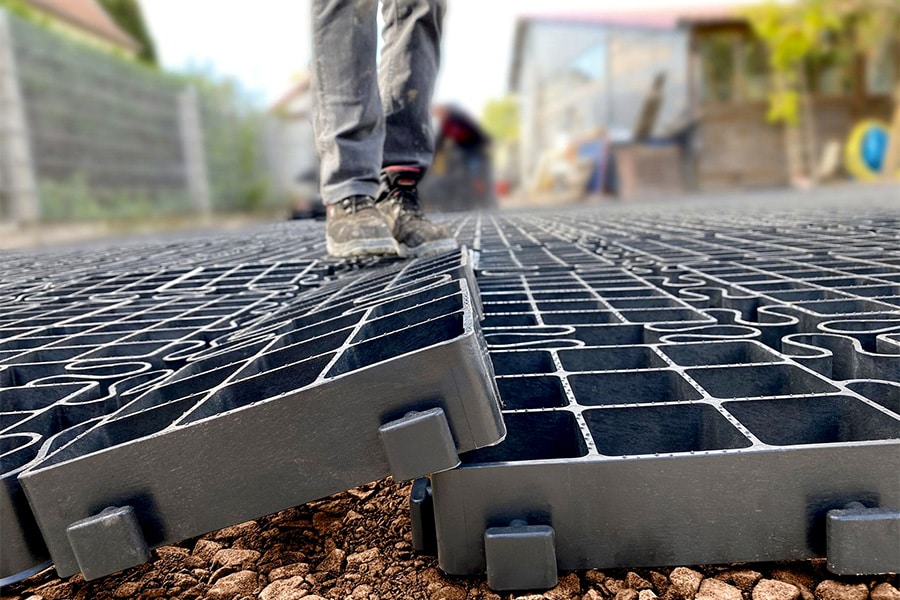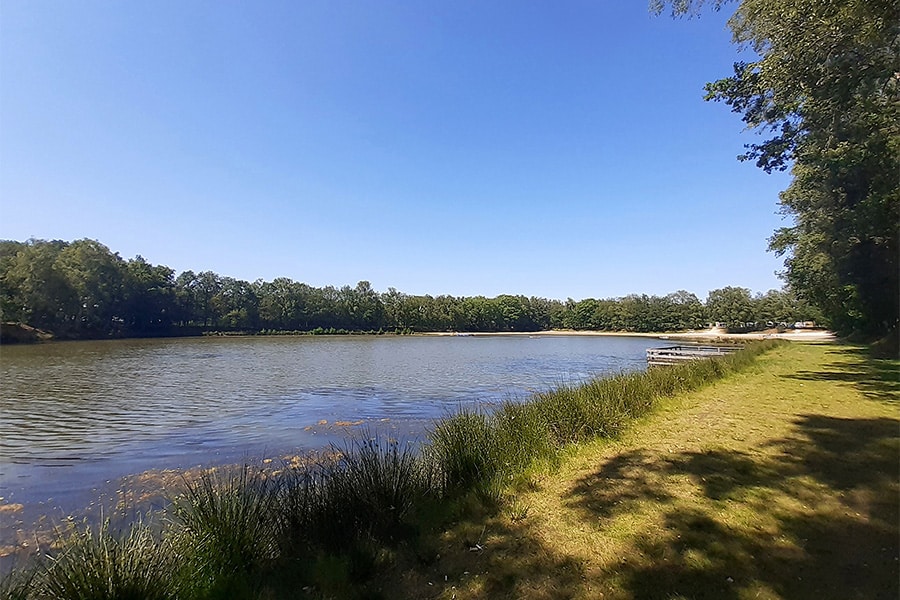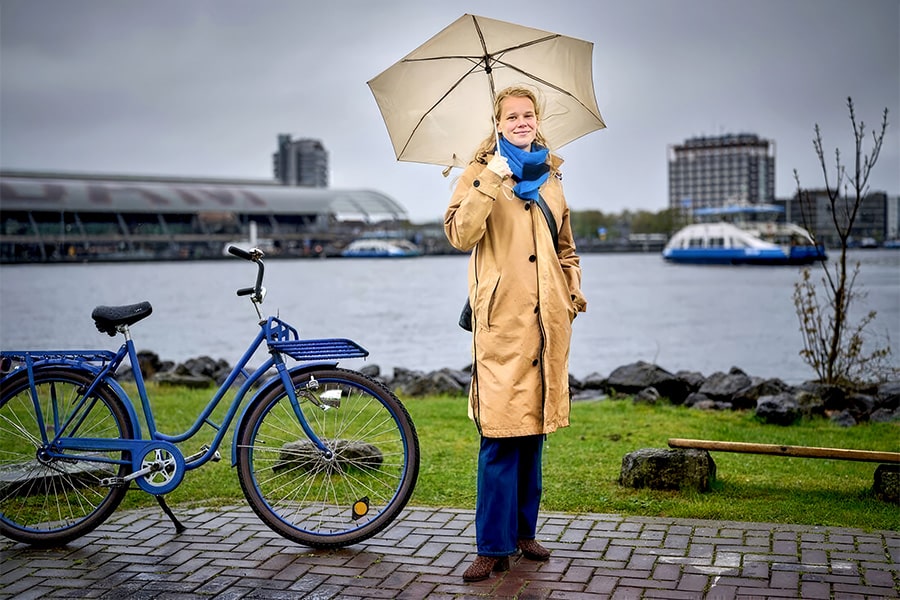
Testing tunnel technical installations RijnlandRoute already underway
The complexity of tunnel technical installations (TTI) can cause significant delays and additional costs in tunnel projects. With the RijnlandRoute, a number of deliberate choices were made to avoid this. For example, the integral tests of the TTI take place even before the drilling of the tunnel has started. A Dutch first.
Driving into the Eindhoven business park, it is hard to imagine that highly innovative work takes place here. The factory halls from the 1950s conjure up the image of industrial heritage and craftsmen in blue overalls. Nothing could be further from the truth. In the halls rented by COMOL5 - the contractor consortium building the RijnlandRoute - 130 cameras have been mounted on the walls that will be used to monitor traffic in the tunnel and the sunken basin in a few years. Hanging from the ceiling are matrix signs, parts of the tunnel lighting and loudspeakers, among other things. Also in the hall are barriers, visibility meters and over twenty brand new and movable modules, container-like structures filled with system cabinets, computers, transformers and some workstations. This is the place where COMOL5 tests whether the TTI and its operation are working properly years before the RijnlandRoute is put into operation.
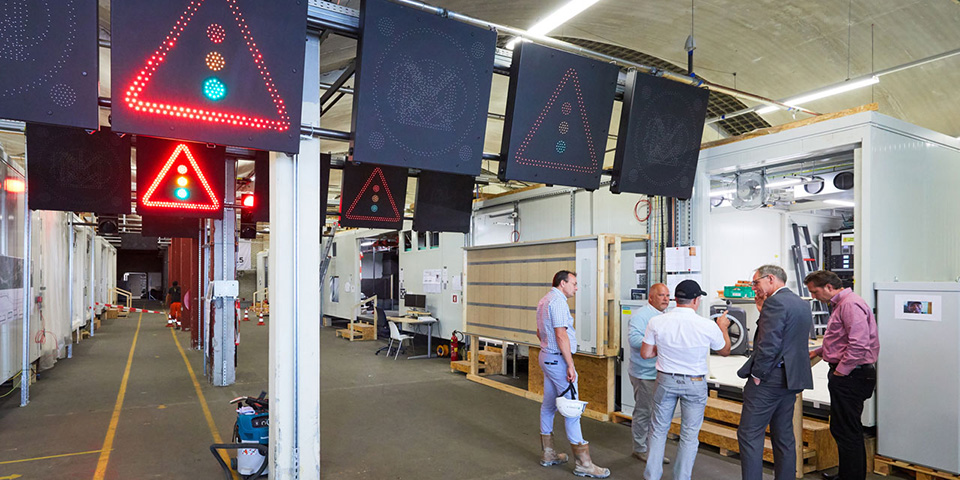
Rebuilt
"We have almost everything here that will soon be needed to operate the tunnel and the adjacent sunken trough of the RijnlandRoute," explains Croonwolter&Dros project manager Hans Nuhn. "In the modules we have installed all the equipment that will soon be in the two service buildings of the RijnlandRoute. Since we have to be able to control the TTI from both buildings, much of this equipment has been duplicated. In the front part of the hall are the modules for service building East and in the back are those for service building West. To the modules, we connected all the equipment needed for tunnel safety and traffic management. We chose to install all of the audio and video systems - where the risk of delivery errors is relatively high - and only part of the systems with a lower risk profile. Of the escape corridors that will soon be between the two tunnel tubes, for example, we recreated one, including all installations, signaling and escape doors."
"By largely building up the TTI here in this test location, we have the opportunity to thoroughly test the integral operation at an early stage and get any teething problems out of it. And since we have also already made a fiber optic connection between the test location and the Southwest Netherlands traffic center in Rhoon, from which the RijnlandRoute will be operated after its opening, we can also already check whether the connection to this center is functioning properly." Such an early connection - three years before the tunnel opens - has not been seen before in tunnel projects.
Additional requirements
Early integral testing of the TTI was an important starting point for the province of South Holland, says Piet Jansen, discipline leader TTI RijnlandRoute at the province: "About ten years ago I was involved in the Spoorzone Delft project at ProRail as contract manager TTI and construction manager. Several projects in the meantime had shown that the opening of tunnels was greatly delayed by problems with the TTI. We wanted to prevent that, so we developed this testing strategy at the time. At Spoorzone Delft, for example, we developed a so-called integrated factory acceptance test (IFAT) to the standard tests. In an IFAT, the integral operation of the TTI, including operation and procedures, is tested in a test environment. Since that early testing worked very well, we included an additional requirement in the RijnlandRoute tender document that the contractor must have demonstrated that all systems work in a test environment at least two years before opening."
The province is also pleased with the early link with the traffic control center in Rhoon. Jansen explains, "In projects you regularly see that contractors first design a tunnel for local operation and only later make it suitable for central operation. In practice, this usually leads to all kinds of redesigns, which entails considerable costs. We have therefore argued that the tunnel of the RijnlandRoute is immediately suitable for central operation from Rijkswaterstaat's traffic center Zuidwest Nederland in Rhoon."
According to Jansen, the reason that local operation is often chosen first is risk-averse behavior: "If you as a project organization opt for centralized operation right from the start, you have to cooperate with Rijkswaterstaat Central Information Provision (CIV) at an early stage. This makes the client co-responsible for reaching the completion date on time, and a project organization sometimes shies away from that. However, I am convinced that it is quite possible to design directly on central control and thus save a considerable amount of community money."
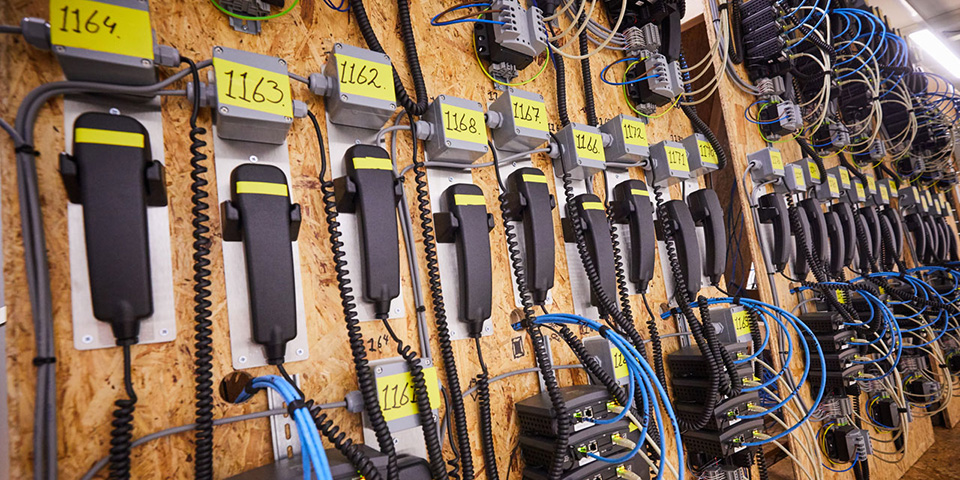
'Integrated desk'
The tender documents further state that the tunnel will soon be operated from behind a so-called integrated desk, a workstation in the traffic control center from which several tunnels can be monitored and operated simultaneously. Jansen: "If you consider that tunnels have to be monitored 24/7, it is obviously much more efficient to link more tunnels to a workstation."
Transition manager Bert 't Hart of the Southwest Netherlands traffic control center in Rhoon agrees wholeheartedly: "If you can only operate one tunnel from a workstation - which in the case of so-called dedicated desks is the case - you need a lot more staff. After all, these operating desks also need to be staffed 24/7. Moreover, you cannot use the staff working at a dedicated desk for other operating tasks since they are not available at this workstation. And on top of that, dedicated desks require a lot of space in the traffic center. Space that we don't actually have. For example, we will soon have to sacrifice our consultation space because we will soon have to create standalone spaces for two new tunnels."
The fact that COMOL5 has already tested the TTI in Eindhoven and made the link with the traffic center is a positive development, says 't Hart: "We have been showing the images from Eindhoven in our training room since July 2. This is a great way to introduce the arrival of the RijnlandRoute to our staff. Although it is still too early for our education, training and exercise program, I find it attractive that our employees can already 'play' with the operation of this new tunnel from time to time and get used to it. Furthermore, the tests and link with the traffic control center ensure that we are already in dialogue with COMOL5. For example, the contractor has already indicated that he will adjust any imperfections in the graphical user interface (GUI) that we encounter during testing, well before opening and in accordance with the national standard for traffic centers. I am very pleased with that, after all, once the tunnel opens we must be able to operate it properly."
Advantages
Like Jansen and 't Hart, Nuhn is convinced that early testing of the TTI in a test hall has numerous advantages: "First of all, of course, you have plenty of time to rectify any problems. If you don't install the TTI until the civil work is completed and then have to start testing, the chances of time pressure are enormous, especially if everything doesn't work as desired. In addition, in a hall you can install everything much easier and you are not bothered by other construction activities, construction dirt and moisture. Furthermore, it is very convenient that in the hall everything is close together. Take the cameras. Here we hung them on both walls of the hall, all right next to each other. As a result, we were ready fairly quickly when, for example, we had to check that the time and date of each camera was set correctly. If you do this kind of check only when everything is hanging in its original place, it takes much more time. After all, the distance between the first and last camera is then more than three kilometers, and to check them you then also need an aerial platform."
Nuhn: "Another advantage stems from the modular structure we chose. Because we install most of the equipment in the modules and we feed the cabling into each module through the same point, for example, we have significantly fewer interfaces with other disciplines. That reduces the risk of errors. Furthermore, early procurement and testing ensures that logistical planning is simpler and delivery documents are ready before the tunnel is even commissioned."
Unique code
Nuhn continued: "The plan is to conduct all tests here over the next year. We will mainly look at the operation of the TTI, but we will also check, for example, whether the system cabinets can be fitted properly in the recesses in the service channel under the road surface in the tunnel. To determine that, we have built a piece of that channel here. Once we have completed the tests and are sure that everything is working properly, we unscrew all the components. Then we carefully store these components, each of which has a unique code, so that we can transport them to the tunnel. We move the modules including their contents unchanged to the service buildings, where we use a crane to put them in their final place."
In the test hall, COMOL5 assembled each component based on their 3D BIM model at the location where it will later be in the tunnel and sunken basin. Nuhn: "When the civil work for the tunnel and the sunken basin is ready, we will move everything there and assemble all the components. In doing so, we use the unique codes to hang everything in the right place. If tests in the tunnel then show that something doesn't work, we know that we have to look for the problem in the cabling or in the failure of the specific component. After all, we won't change anything about the modules once everything is working properly. That will make troubleshooting a lot easier later on."
"What is also attractive is that we will soon have to do considerably less testing in the tunnel, because we have already proven the operation of the TTI here in Eindhoven. As a result, we can then focus mainly on the necessary physical tests, such as checking the overpressure and ventilation capacity. This approach therefore minimizes the chance that the tunnel will not open on time due to problems with the TTI."
